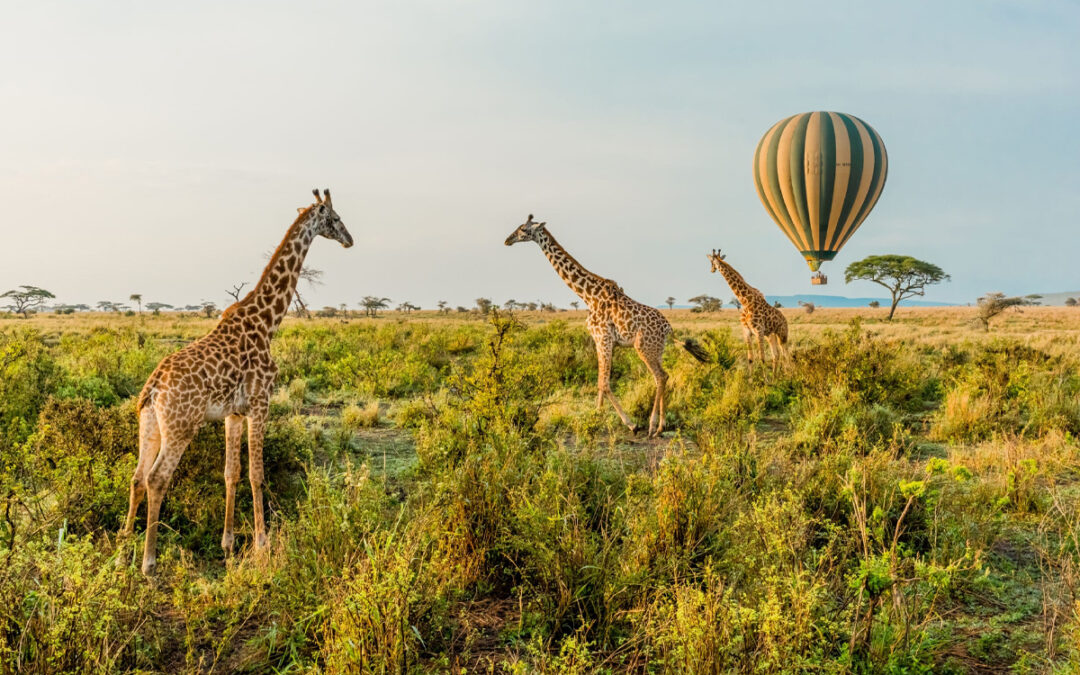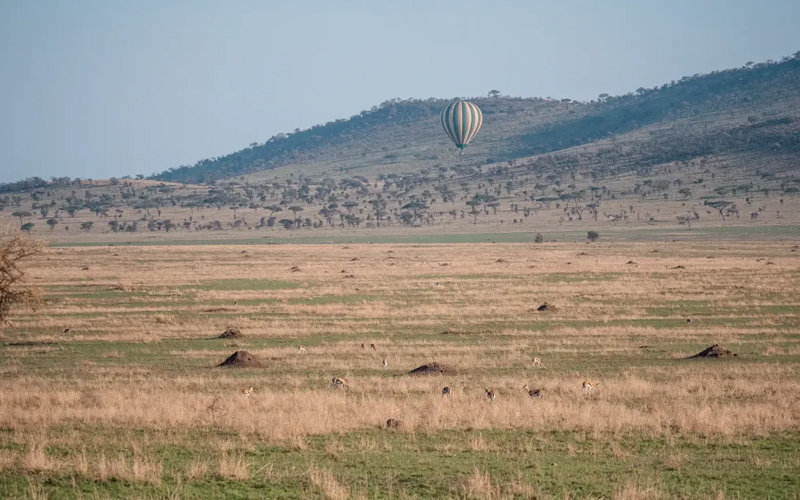Serengeti Safari Tips Avoid Crowds 2025
The Serengeti—one of the most iconic and revered wildlife destinations in the world—attracts millions of visitors each year. With its vast plains, dramatic landscapes, and unparalleled wildlife, it’s no surprise that it’s a top choice for safaris. However, crowds can sometimes overshadow the beauty and serenity of the experience, particularly during peak tourist seasons.
As 2025 approaches, many safari-goers are looking for ways to experience the Serengeti without the crowds. In this article, we’ll offer expert tips for a crowd-free safari that allows you to fully immerse yourself in the wonders of the Serengeti, without competing for space with fellow tourists.
Understanding Serengeti’s Popularity
- The Serengeti’s Appeal to Tourists: The Serengeti is world-renowned for its extraordinary wildlife and is often associated with the Great Migration, where millions of wildebeests, zebras, and gazelles make their epic journey across the plains. Additionally, the Serengeti offers a vast array of wildlife, including lions, elephants, leopards, and rhinos, all of which make it a bucket-list destination for nature lovers and photographers alike.
- When the Serengeti is Busiest: Tourists flock to the Serengeti year-round, but the peak seasons generally align with the Great Migration—between June and October. These months coincide with the dry season, when animals gather around waterholes, making it easier to spot them. While this time of year offers excellent game viewing, it can also lead to crowded viewing areas and congestion on game drives.
- The Impact of Tourism on the Wildlife and Experience: More tourists means more vehicles, and the constant presence of safari cars can disrupt animal behavior and reduce the quality of the experience. By planning a crowd-free safari, you can contribute to a more sustainable tourism model, minimizing your impact on the ecosystem.
Best Times to Visit for a Crowd-Free Experience
- Off-Season Months to Avoid Crowds: To truly experience the Serengeti in solitude, consider visiting during the off-season. The months of March to May (the rainy season) see fewer tourists, as many people avoid the unpredictable weather. The trade-off is the lush landscapes, greener surroundings, and fewer tourists vying for the same views.
- The Benefits of Traveling During the Shoulder Seasons: The months of November to mid-December and late January to February are ideal for shoulder season travel. During these times, you’ll experience fewer crowds, and the weather is often pleasant and more predictable. This is an excellent time to visit if you want to avoid the larger crowds of the dry season but still want to experience excellent game viewing.
- Weather Considerations and Optimal Safari Conditions: The Serengeti’s climate is generally temperate, but the rainy season can sometimes create challenging road conditions, which can limit your access to certain areas of the park. However, the green season offers its own rewards, including vibrant landscapes and the opportunity to see different animal behaviors, such as newborn animals.
Lesser-Known Areas of the Serengeti
- Exploring Hidden Gems Away from the Crowds: One of the best ways to avoid the crowds is to explore the lesser-known regions of the Serengeti. While most visitors head to the central Serengeti for the best game viewing, the park is vast and includes several lesser-explored areas such as the Western Corridor, northern Serengeti, and the southern plains. These regions are often more peaceful and offer a more intimate wildlife experience.
- Unique Regions Within the Serengeti National Park:
- The Western Corridor is known for its river crossings during the Great Migration.
- The Northern Serengeti is a great spot for off-the-beaten-path safari adventures, especially around Lobo and Kogatende.
- The Southern Plains are quieter during the dry season and offer great viewing of the big cats and migratory herds.
- Why These Areas Offer a More Intimate Safari Experience: By venturing into these lesser-visited parts of the Serengeti, you’ll have the opportunity to experience wildlife in a more peaceful setting, without the distractions of other safari vehicles. This means more time spent observing animals, less noise, and a more authentic safari experience.
Private and Exclusive Safari Options
- Benefits of Private Safaris: Opting for a private safari ensures that you’ll have exclusive access to certain areas of the Serengeti. Private safaris give you the flexibility to explore at your own pace and minimize contact with other tourists. This is the perfect option for those looking for a more personalized, intimate experience.
- Luxury Safari Lodges and Tented Camps: For a truly crowd-free experience, consider staying in luxury safari lodges or tented camps that offer exclusivity and seclusion. These accommodations often sit in remote locations, far from the main tourist areas, allowing you to experience luxury and serenity amidst nature.
- How Private Safaris Minimize Crowd Exposure: Private safari vehicles can go off the main roads and explore areas that larger groups can’t access. This provides you with more privacy, more opportunities to observe wildlife, and a chance to avoid the crowds.
Using a Professional Safari Guide
- The Role of Guides in Crowd Management: A skilled safari guide is invaluable when it comes to navigating the Serengeti without the crowds. They are familiar with the park’s less-visited areas and can take you to hidden spots where other vehicles are unlikely to go.
- How Guides Help You Find the Best Wildlife Experiences: A knowledgeable guide will know the animals’ habits and movement patterns, ensuring that you have the best chance of spotting rare wildlife in remote areas of the park.
- Choosing a Knowledgeable and Experienced Guide: When booking a safari, make sure to choose a guide who has in-depth knowledge of the Serengeti, its animals, and the off-the-beaten-path experiences the park has to offer.
Safari Etiquette: How to Be Respectful to Nature and Others
- Avoiding the “Herd Mentality”: It’s important to be mindful of other safari vehicles and tourists. Avoid following the crowd or rushing to crowded viewpoints. Instead, focus on quiet observation and respect for the wildlife around you.
- Staying on Designated Paths and Trails: For the sake of the environment and wildlife, always stay on designated paths and avoid disturbing the natural habitat.
- Respecting the Wildlife and Fellow Travelers: Respect the animals by keeping your distance and avoiding loud noises. Similarly, be courteous to fellow travelers and share space in the park, especially in popular viewing areas.
Photography Tips for a More Peaceful Safari
- Capturing the Essence of a Crowd-Free Safari: When taking photos, be patient and focus on capturing the essence of the Serengeti without being distracted by crowds.
- How to Avoid Overcrowded Viewpoints: Seek out lesser-known spots for photography, where you can get unobstructed views of wildlife and landscapes.
- Techniques for Photographing Wildlife Up Close: Use a telephoto lens to capture detailed shots of animals from a distance, ensuring minimal disturbance.
Combining the Serengeti with Lesser-Known Parks
- Exploring Other Lesser-Known National Parks in Tanzania: Consider combining your Serengeti visit with safaris to Ngorongoro Crater, Ruinsori or Tarangire National Park. These parks offer unique experiences and can complement a more secluded Serengeti adventure.
- Creating a Diverse Safari Itinerary: By exploring multiple destinations, you’ll ensure a more varied and crowd-free safari experience while still experiencing Tanzania’s diverse wildlife.
- How to Balance Popular and Hidden Destinations: Mix well-known areas with off-the-beaten-path parks to enjoy both the famous wildlife spectacles and more serene, secluded experiences.
Eco-Tourism: Minimizing Your Impact
- The Importance of Sustainable Tourism in the Serengeti: Opt for eco-friendly safari operators that prioritize conservation efforts and sustainable tourism. This reduces the environmental impact of your visit and supports the local economy.
- Choosing Eco-Friendly Safari Operators: Look for companies that are certified for responsible tourism, ensuring your safari experience supports conservation.
- Reducing Your Carbon Footprint During Your Trip: Consider flying in a smaller, eco-friendly aircraft or using electric vehicles for game drives to minimize your carbon footprint while enjoying the Serengeti.
The Serengeti is a world-class destination, and with careful planning, you can experience its awe-inspiring wildlife and landscapes without the crowds. By visiting during off-peak seasons, choosing private safari options, and exploring lesser-known areas, you can enjoy an intimate and peaceful safari in 2025.
FAQs
1. How can I avoid crowds in the Serengeti in 2025?
Traveling during the off-season (March to May) or shoulder season (November to December) can help you avoid crowds.
2. What are the best off-season months to visit the Serengeti?
The best months for a crowd-free experience are March to May and November to mid-December.
3. How can a private safari improve my Serengeti experience?
Private safaris offer exclusive access, allowing you to explore more secluded areas and enjoy a more personalized wildlife experience.
4. Is it worth visiting lesser-known areas of the Serengeti?
Absolutely! These areas offer a more peaceful, intimate safari experience, often with fewer tourists.
5. How do I book an eco-friendly safari in the Serengeti?
Look for safari operators with eco-tourism certifications and those who prioritize conservation efforts.


